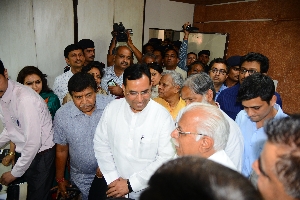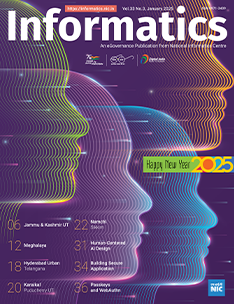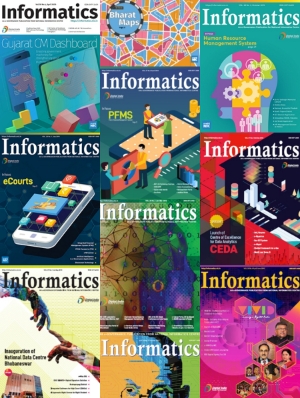Haryana: e-Stamping System in Property Registration launched in Haryana by Chief Minister on 2nd May, 2015 from Panchkula.

At present, State government receives stamp duty through issuance of stamp papers by Treasury (upto value of 10,000/-) and issuance of stamp duty receipt by various authorized branches of SBI (for value exceeding Rs. 10,000/-). The treasuries are required to maintain huge stock of stamp papers, which are got printed from Nasik. Although at present stamp papers have some security features, however there isn’t any full proof mechanism to ensure the genuineness of the stamp paper at the level of the registering authorities. Further it is not possible to keep a record of purchaser and user of each and every stamp paper. Even in case of receipt issued by the SBI branches, there isn’t any integrated mechanism to ensure that the receipt is genuine. Further no record of purchaser and user of each and every such receipt are available in the system and there is always possibility of misuse of the same.
The Departments of Revenue, Finance and Information Technology of Haryana has started a new initiative called e-Stamping for online generation of Stamp paper integrated with online property registration.
E-Stamping , an application developed by NIC Haryana with Integrated Finance Management System and Property registration System has been inaugurated. This is the first of its kind initiative in India. Using this system, Citizen will be able to generate the stamp paper at his home by paying stamp fee through internet banking. This will not only abolish the usage of security printed stamp papers but also will able to eliminate the frauds related to fake stamp papers. The State will also be able to save more than Rs. 20 crores being paid by state govt in terms of commission charges and maintaining huge inventory of stamp papers in the treasuries.
In the e-stamping system any citizen, who desire to have a stamp paper for presenting any document before any government authority in the State, can generate the stamp paper on his own through the Online system. He can either make online payment through e-GRAS (Govt Receipts Acceptance System - https://egrashry.nic.in ) by making payment online through PNB, IDBI or BOI Internet banking gateway and generate stamp paper immediately on e-stamp system or he can pay through cheque/cash after generating requisite challan on e-GRAS system and then generate stamp paper through e-GRAS portal after online confirmation of payment, which will be within a period of one working day.
The Sub Registrar is able to verify the deposit of the money as well as the generation of the stamp paper through the Online system and is required to deface the stamp online while registering the document and defacement code will be required to be indicated on the document. Even in those cases where registration is not required but mere acceptance of document on stamp paper is required, the authority will deface the stamp paper on line and defacement code will be required to be indicated on the document.
The e-Stamping System will provide many Advantages to public and government like Stamp can be generated by any citizen while sitting at his home/office and he/she is not required to visit bank/treasury/stamp vendor. The name & address of the purchaser, purpose of purchase get printed on the stamp paper and record of same remains available in the system. The Purchaser is required to provide his cell phone number and he can generate stamp only after he feeds the code sent on his cell phone through SMS. This keeps a track of purchaser as well as prevents generation of stamp paper by an unauthorised person. The registering authority is required to deface the stamp paper online and indicate the defacement code on the stamp paper. This ensures multiple use of a stamp paper is not there and thus prevents fraudulent transactions. The registering authority can ensure that only authorised person is using the stamp paper. Details of the purchaser, purpose of purchase, date of purchase etc. can be verified online by any citizen by logging to e-stamping site and entering the stamp paper code indicated on the stamp paper. System will also indicate if the stamp paper has already been defaced by some authority and thus a person can’t use same stamp paper more than once. Back dating of stamp paper is not possible. In cases of fraudulent transfer of property by unauthorized person, the system will be able to track the purchaser through cell phone number & internet connection used for generating stamp.




 Subscribe
Subscribe
 Flipbook
Flipbook PDF (5.0 MB)
PDF (5.0 MB)


